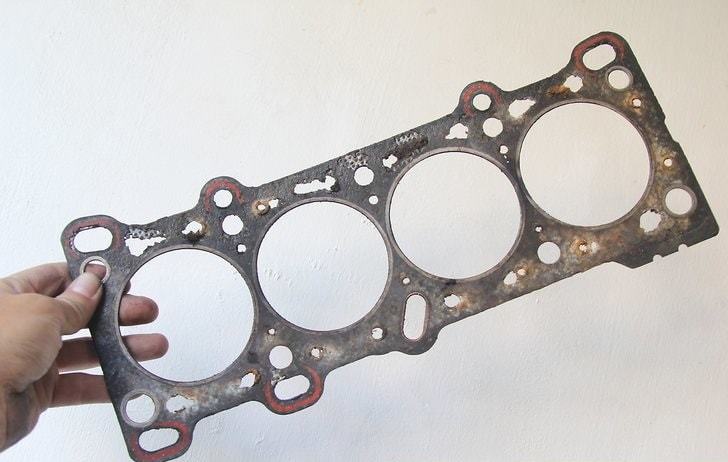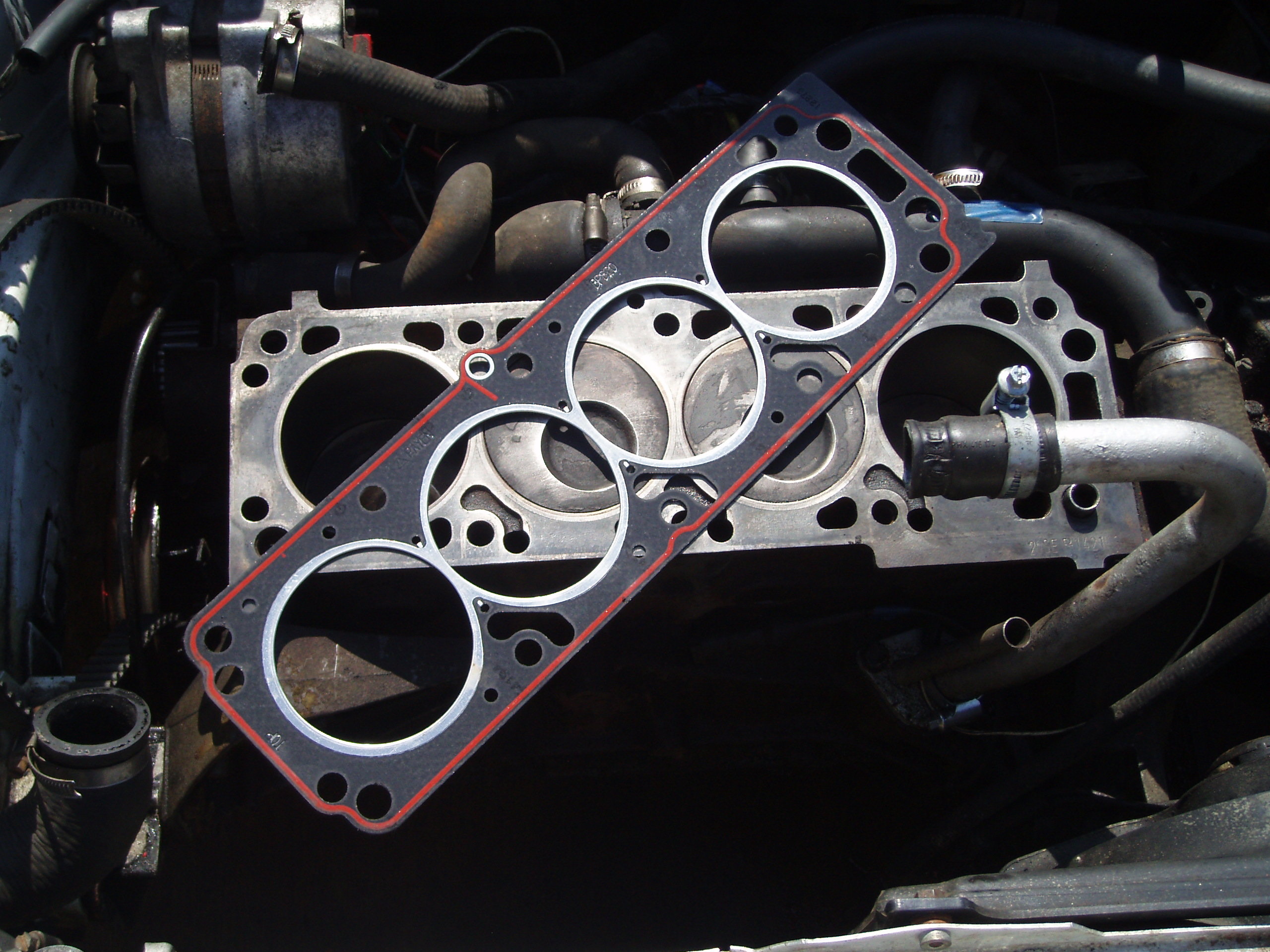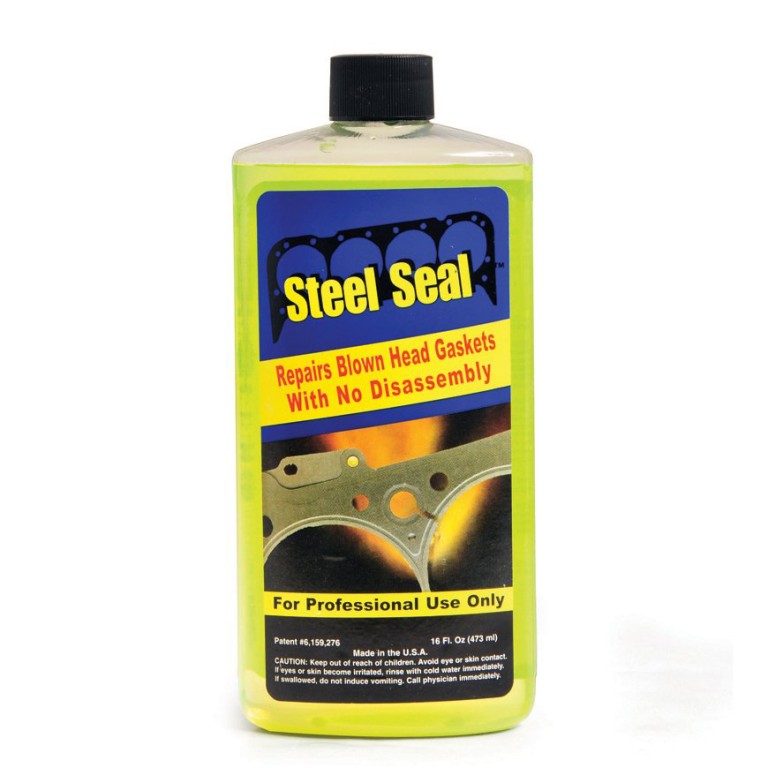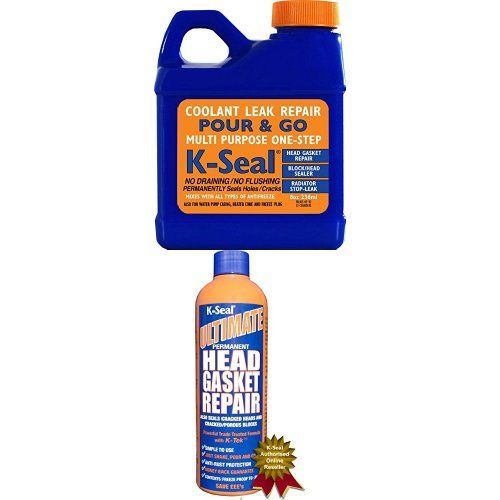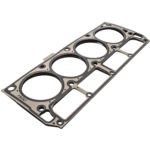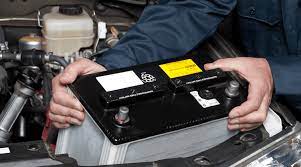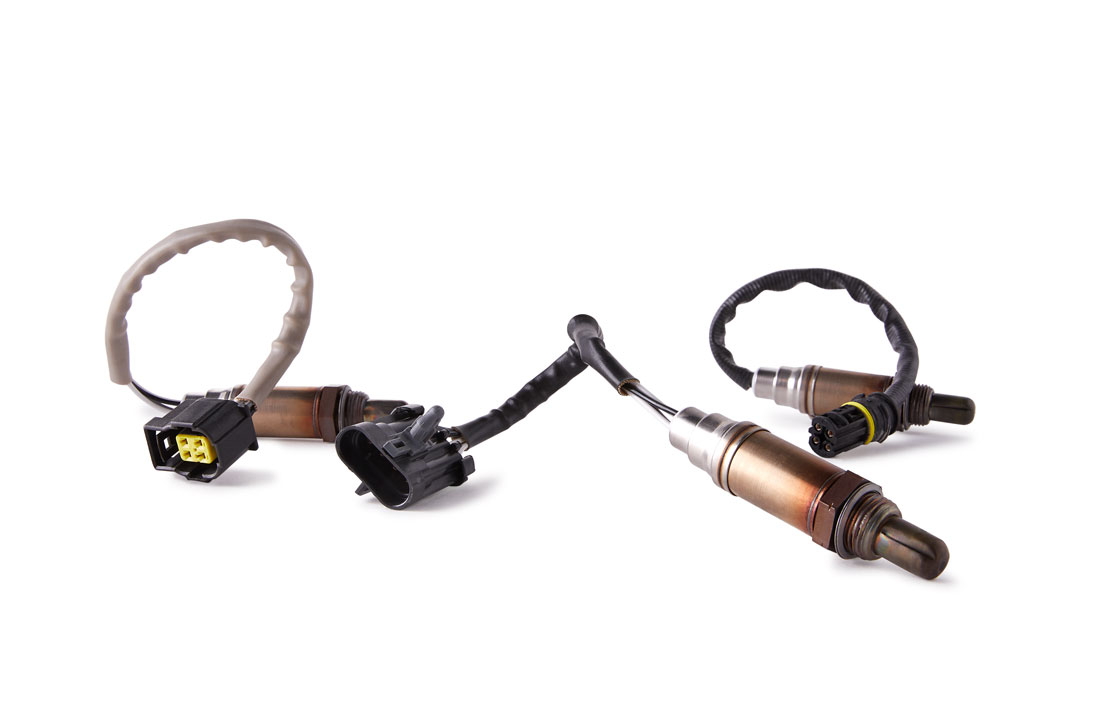In this guide, we are going to work you through the steps of fixing a blown head gasket without replacing it. But before we start, let’s briefly consider what a head gasket is, the symptoms of a blown head gasket etc.
What Is a Head Gasket?
The head gasket seals both the combustion chamber and the combustion part of the engine, allowing oil and coolant to pass. This permits the vehicle to continue forward while also diverting hazardous gases away from the combustion chamber via the exhaust system.
In current vehicles, the head gasket is made up of many layers of steel material intertwined with elastomer, which makes it more resilient and long-lasting. Gaskets made of graphite or asbestos used to be used on older vehicles. In compared to asbestos-produced gaskets, today’s gaskets are preferable since they are less prone to leaking and pose little health risks.
In a combustible engine, the head gasket is a critical component. The head gasket keeps the pressure created by the ignition of gasoline vapors by the spark plug contained within the combustion chamber. The pistons are housed in the combustion chamber, which requires a high level of pressure to keep them firing properly. Furthermore, while oil and coolant provide similar functions, they cannot be mixed. The head gasket separates the chambers to prevent fluid contamination.
Symptoms Of a Blown Head Gasket
If you experience any of these signs, then you should know that your head gasket is blown and needs to be fixed:
Fluid Leak
When you notice a leak, it is one of the most telling signals that something is wrong with the car; it is never good news. The coolant leak is visible below the intake or exhaust manifold in the case of a burst head gasket. This can only be done once the engine has warmed up.
If there are no other cooling passageways or hoses near the gasket, the leak is very certainly caused by a blown head gasket. In some cases, you may need to add a UV light to top off the coolant and then use it to locate the leak in the head gasket. Any leak from anyplace in the car indicates that something is wrong with it, and it is always a good idea to have it checked by professionals.
White Smoke
When the leak is external, you can use the method described above to locate it. When the coolant is allowed to flow into the combustion chamber, however, the majority of the leaks are internal. The coolant burns/evaporates with the combustion process, resulting in a cloud of white smoke from the tailpipe when the gasket fails to keep the fluids separate.
It’s immediately identifiable, and it has a pleasant aroma that adds to its appeal. The size of the leak determines how much white cloud you’ll see coming out of the exhaust.
Blue Fumes
White smoke suggests a leaking coolant, but it isn’t the only type of smoke to look for. Blue smoke could also be a sign of a blown head gasket or leaking engine oil. Engine oil leaks into the combustion chamber when it escapes from the lubricating pistons. If your car emits blue smoke, it’s time to conduct a short inspection.
The smoke is particularly obvious because oil doesn’t burn as cleanly as fuel. Make sure you don’t drive any farther and get the gasket tested as soon as possible.
Bubbles In Radiator
An internal head gasket leak could enable exhaust fumes into the coolant if the coolant can enter the combustion chamber. This causes bubbles to form in the radiator or coolant reservoir, giving the impression that the liquid is boiling even when it is not.
The bubbles are exhaust gases that enter the cooling system during the combustion process and cause the cooling system to overheat. If you notice any bubbles in the radiator, take your automobile to the local service center.
Milky Or White Oil
Seeing White/milky Oil is another indicator of a burst head gasket. If coolant escapes into the combustion chamber, it might enter the oil via the piston rings. When oil and water mix, they generate a milky white substance that can be easily detected using the dipstick located around the engine oil cover.
Apart from entering the oil, the water+oil mixture causes poor lubrication of the engine, resulting in cylinder wall wear as well as wear on the crank and camshaft bearings. When you see a Milky or White Oil, it’s a good idea to have your car checked.
Engine Overheating
One of the most typical indications of a ruptured head gasket is an overheating engine. A blown head gasket will not be able to prevent oil from entering the coolant system, causing the engine to cool off more slowly. In addition, the inefficient combustion process, heat from the exhaust, and a problem with dirty coolant in the radiator all contribute to the engine overheating.
Overheating an engine can result in a variety of problems, including metal expansion, seal damage, and leaking. It’s critical to take care of the problem and never take an overheated engine for granted.
How To Fix a Blown Head Gasket Without Replacing It
If your gasket isn’t completely blown, it might not be worth it to repair it. Use BlueDevil Head Gasket Sealer instead of spending time and money to replace it. BlueDevil Head Gasket Sealer is a designed, non-particulate head gasket sealer that forms a chemical weld at the leak location in your head gasket, sealing the leak and getting you back on the road quickly. BlueDevil Head Gasket Sealer is safe for your cooling system, simple to apply, and ensures that your leak is sealed!
Other Best Head Gasket Sealants
When fixing your blown head gasket, you can also try these other head gasket sealants. They’ve been used by millions and it has worked out for them. Give it a try if you don’t ant to use BlueDevil head gasket sealant.
J-B Weld Ultimate Copper Silicone Gasket Maker and Sealant
This Silicone gasket sealer is made by J-B Weld, a company known for producing high-quality adhesives. It’s constructed of silicone and may be easily applied to a number of surfaces. It can be used on mechanical assemblies that operate at high continuous temperatures of 550-650F because it is an RTM (Room Temperature Vulcanized) material.
Even on rough surfaces, the head gasket sealant cures quickly to form a solid bond. It develops a waterproof cover on surfaces as soon as it is exposed to moisture in the air since it is an anti-freeze sealant. The product is also weather-resistant, crack-resistant, and shrink-resistant, as well as sensor-safe.
Exhaust manifolds, automobile head gaskets, oil pans, water pumps, drive housings, and oven doors are just a few of the surfaces that J-B Weld head gasket sealer can be used on.
For mechanical assemblies that operate at high temperatures, it is the best head gasket sealer (550-650). The substance provides a waterproof seal that does not crack even when exposed to high temperatures after usage.
Steel Seal Blown Head Gasket Fix Repair Sealer
For a used car, an old truck, or a vehicle with a larger engine, Steel Seal head gasket sealer is the best option. It has a high price tag, and for good reason. For starters, it solves white smoke, watery oils, and external leaks caused by blown head gaskets.
Second, with just one application, Steel Seal head gasket sealer is effective on older engines. The product is free of particles that can cause engine blockages or tube buildup, resulting in even more engine problems. However, before pouring in the sealer, drivers must flush the system. It can be inconvenient for people who need a quick gasket replacement.
The product quickly seals cracks and breaches, resulting in a long-lasting seal. The seal does not crack even when subjected to extreme temperatures. Steel Seal Head Gasket Sealer was also found to be the best for both diesel and gasoline engines.
Permatex Indian Head Gasket Shellac Compound
Looking for a head gasket seal that will give you a good return on your investment? The finest option is Permatex Shellac Compound. Its formula dries slowly, allowing the user to assemble parts without feeling pressured. Rubber, cork, and plastic gaskets are among the materials that the compound is designed to adhere to.
The product has a wide temperature range, ranging from 65 to 350 degrees Fahrenheit, making it acceptable for use on both hot and cold engines. It’s also resistant to a variety of shop fluids and diesel fuels. Permatex’s Shellac sealant is quite versatile, as it can be used in both automotive and aviation applications. Furthermore, in addition to its obvious function as a sealant, it can be used as a lubricant in an emergency.
Permatex High Tack Gasket Sealant
For general-purpose applications, it is the best head gasket sealer. It can be used on cold and hot engines, as well as other components such as fuel pumps, valve covers, manifold gaskets, composite gaskets, and carburetors, with a temperature range of -65 to 500F.
The solution dries quickly, leaving a strong, sticky layer that seals and holds cut gaskets in place throughout assembly. Butane, gasoline, kerosene, and anti-freeze are all resistant to Permatex High Tack Sealant. It can, however, be used in an electric vehicle because it is sensor-safe. The product’s adhesiveness is unusual in that it allows the sealer to stick to the surface for an extended period of time. In addition, the sticky coating that results makes it simple to remove.
ATP Automotive AT-205 Re-Seal Stops Leaks
For purchasers seeking for a product to cure minor leaks, the Atp AT-205 head seal is an ideal choice. It’s simple to use and seals cracks and holes quickly. Rubber leaks in an old car can also be sealed with this solution. It revitalizes the seals, hydraulic systems, and power steering, giving them a new lease on life.
Because this head gasket sealer is compatible with gear oils, power steering oils, and synthetic oils, there is no need to flush them out before applying it. The majority of customers are concerned that the sealant would alter the chemical composition of other car fluids, but this is not the case with the ATP AT-205 stop leak.
Use the product when changing the engine oil for best results. Also, drive the car for a few minutes after applying the solution to avoid the paint from disintegrating and clogging the system.
For a head gasket sealer designed for tiny leaks, ATP Automotive contains no petroleum distillates, which is quite impressive. Rubber seals break down and swell as a result of petroleum distillates, reducing the sealer’s effectiveness.

